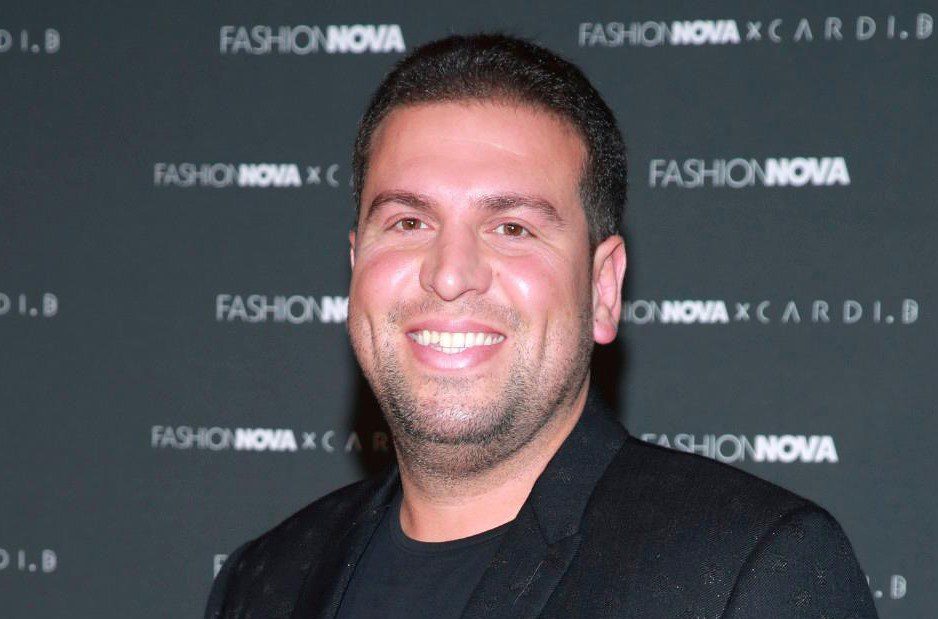Fashion Nova & Its Huge Bet on Instagram to Foster A “Ultra-Fast Fashion” Brand
Far gone were the days when high fashion remained something that was purely aspirational yet inaccessible. Along the course of the 20th century, whereas there existed some who still couldn’t get their hands on haute couture, high fashion became easier to reproduce in a way that the general public could afford. Such a retail trend of flipping runway looks into mass-produced likenesses was dubbed fast fashion, and padded the profit margins of incumbent leading brands such as H&M and Zara.
Since media consumption evolved and trend cycles sped up, a plethora of fast fashion brands came gunning for those retailers, including Fashion Nova. Within a relatively short span of time, Richard Saghian’s golden childbirth has emerged as a ground-breaking player in the fast fashion sphere. With absolutely no interest in search engine optimization (SEO), Fashion Nova was astonishingly ranked the most Googled fashion brand of 2018, becoming the Internet’s favorite fashion label. This could be mainly attributable to its big bet on Instagram and the huge power of influencers.
So, how has this California-based retailer established a glamorous fashion empire completely on Instagram? Let’s read on to uncover!
The Wave of Fast Fashion With “Whiplash-Inducing” Speeds
Before diving into Fashion Nova’s trajectory to take over Instagram and change the fast fashion scene, let’s first cast a quick glimpse over the fashion landscape just before and upon its inception.
Through the 1970s and 1980s, giant names – including H&M, Zara, and Topshop – emerged as unrivaled leaders within the sphere as they managed to figure out winning practices to transform runway and editorial designs into cheaper versions for the masses in less than a month. Over the course of the 1990s and 2000s, the one-two punch of the Internet and cable television did speed up trend cycles while also fostering public appetite for fresh looks.
If certain trends went underserved or even completely unserviced by this crop of retailers, new brands emerged to take a slice of the market. Particularly, there existed upstarts such as Forever 21 (offering South Korean designs for the underserved Korean-American community) and UNIQLO (offering cheap but stylish basics with lines of inexpensive wardrobe staples), which pumped out new clothes faster than their predecessors to grab a chunk of the market.
That was also the time when Fashion Nova joined the market and cranked fast fashion cycles to “whiplash-inducing” speeds!
Fashion Nova: Born to Close the Missing Part of Women’s Apparel Market

As fast fashion designs are – in essence – based off clothes from the runway, those clothes naturally trended toward smaller sizes for smaller and far less curvy bodies. When there was pressure for plus-size options, the companies would, of course, offer them – yet, it’s undeniable that they were always adapting fashion model-oriented designs into plus-size pieces, and never into pieces that celebrated curves. Generally, most fast-fashion players cared all but ignored a major demographic: Curvy women who embrace clothes that are really tailored to their bodies. This explained why Fashion Nova came into place.
The fast-fashion brand has designed clothes for what was once treated as a niche audience and stricken gold by riding the crest of a wave.
Founded in 2006, Fashion Nova has been privately owned and operated by the Iranian-American CEO Richard Saghian. He was introduced to retail through his father, who owned women’s clothing stores where Saghian worked during his summers. With a keen eye, Saghian was able to identify a missing part of the women’s apparel market by bringing sexy clubwear and jeans for women to the forefront of the affordable fashion industry.
“We’ve revolutionized fashion by making our customers part of the conversation from concept to delivery. We stay ahead of the fashion curve and the competition by engaging with our community every day to ensure we deliver what they need as fast as possible.” Richard Saghian.
In particular, Fashion Nova had its first store at the Panorama Mall in Panorama City, Los Angeles, beginning selling affordable club attire. Plunging necklines and body-hugging dresses did meet the needs of curvy women who had not seen any other fashion brands focus on well-fitting, stylish and sexy clothing options previously. “All our other competitors were always using the same models over and over,” commented Richard Saghian. “We thought we could be a little different by celebrating body positivity and using curvier girls and the customers liked it.”
What should be noted is that this California-based did keep things affordable: Whereas Fashion Nova has mixed in increasingly expensive looks over the years, the majority of fashion items still hover around the original median of $20 to $30.
“A lot of my competitors have teams that work on a budget all day and are obsessed with profit margins,” shared Saghian. “I don’t want to focus on that right now. I believe that as long as we focus on giving the best product at the best price and getting it to our customer fast, we will continue to grow.”
Since this line expanded to cover more casual looks, catering to all body types and ethnicities, such as Fashion Nova’s signature hourglass-figure-friendly jeans, the company quickly became a cult hit. As Richard Saghian’s golden child became more and more prevalent, so did the “Kim Kardashian” phenomenon (an American television personality and entrepreneur known for her good looks and curvaceous figure) and long overdue body positivity movement – finally, curvy ladies got exposed to media coverage that portrayed them and their bodies as attractive and desirable.
Fashion Nova & Instagram: A Heaven Combination to Redefine Fast Fashion Landscape
Pioneering Harnessing Instagram to Ignite Online Presence
Whilst four more brick-and-mortar locations were planned to open over the years, Richard Saghian did not launch the online store until 2013 – after the store’s Instagram account had started to prove there was a strong desire for Fashion Nova in the digital space.
With 60,000 followers on his personal account prior to the launch of fashionnova.com, Saghian parlayed his bordering macro-influence into a loyal following for his then emerging brand. Notably, the website sold out of inventory on its first weekend.
“I had 60,000 followers on Instagram before I launched the [eCommerce] site,” shared Saghian. “I kept delaying it because I don’t think I believed it was going to do this well.”
Although Saghian was relatively late to eCommerce, he was one of the first to recognize that social platforms would soon be integral to successful branding, jumping on the social media marketing wave early as well as pioneering adopting Instagram, in particular, as a platform to connect and relate to customers in a way that had never been done before.

Adopting Bold Tactics to Form a Fantastic Instagram
When it comes to curating Fashion Nova’s Instagram content, the brand posted frequently about best-selling items from the very first start. And as they release a jaw-dropping 600 to 900 items weekly, there’s no shortage of content. “It’s important to have a lot of styles because our customers post so much online and need new clothes. We don’t want girls showing up to the club in the same outfit. We need 50 different denim jackets. Not just one,” shared Saghian.
Remarkably, Fashion Nova’s signature tight, high-waisted “bodycon” style has set the Instagram-aesthetic look into the stone, characterized by affordable on-trend clothing endorsed by influencers and celebrities alike.

As regards posting frequency, setting too many Instagram posts is generally considered detrimental and a fast path to a large number of Instagram fellows unfollowing your account. This way of thinking is often applied to individuals, and brands when it comes to marketing strategies. Nevertheless, some contradicting evidence was revealed when multiple daily posts do not necessarily negatively undermine brand image: indeed, whilst a slight decline in post engagement can be observed, there remains a remarkable increase in overall daily engagement. And Fashion Nova emerges as one of a very few cases then.
Specifically, the fast-fashion retails posts at least nine images or videos on Instagram daily, yet typically rolls out 20 to 30 posts. To a casual fan, such a barrage of posts could be unseemly and might prompt a swift unfollow; however, this method has cultivated a rich brand loyalty from devout shoppers. They understand the high stakes of waiting for the latest outfit before it goes sold out, and happily invite the endless images of curvy models into their feed to avoid missing out.
Fashion Nova: From Influencers to Social Trend of #NovaBabes
As Fashion Nova expands with a growing profit stream (not too long since the online site launch), the company looked to leverage the power of influencer marketing, starting to invite celebrities to work with the brand, including Blac Chyna and Christina Milian. Whereas Kylie and Kris Jenner are the only members of the Kardashian clan who officially partner with Fashion Nova, Kim, Khloe, and Kourtney have been organic influencers for the brand for years. According to Women’s Wear Daily (better known as WWD), just a single post by Kylie Jenner, returns millions of dollars in revenue for Fashion Nova.
“I’m convinced that influencer marketing is a hugely successful performance or profit-based channel,” commented InfluencerDB Founder and CEO Robert Levenhagen on Fashion Nova’s branding strategy. “For every dollar they spend, they make more than one dollar of margin, and that’s why they keep scaling and investing in [influencer marketing].”
Given that, the true “bread-and-butter” of Fashion Nova’s Instagram marketing strategy lies at the combination of tiered influencers and a brand growth pipeline for those submitting user-generated content. In fact, the company “boasts” a network of thousands of influencers who often refer to themselves as “brand ambassadors”.
Particularly, the brand counts around 20 million followers across its Instagram accounts and a myriad of users routinely tag their selfies with the hashtag #NovaBabes. Accordingly, Fashion Nova reposts lifestyle photos from these women, which supplies a discovery channel for at the very least user-generated content and at most, future ambassadors.

Furthermore, the brand also harnesses the huge power of micro-influencers, typically someone with a follower base between 50,000 and 250,000.
Notably, Fashion Nova began partnering with Cardi B long before she becomes a superstar—back when she was just a mid-level Vine and Instagram star, not yet even on VH1’s Love & Hip Hop: New York. “Before she even started her musical career, she was shopping Fashion Nova,” shared Saghian. “I worked with her all the way back in 2014 or 2015. She was a personality and she had really great content on her social media. And we loved her style so we would always work with her.” As a result of that long-time partnership, Fashion Nova now enjoys both paid and organic recommendations from Cardi B to her more than 88 million Instagram followers.

“The most successful strategies are where you consider the influencer marketing industry like a pyramid,” noted Levenhagen. “If you consolidate that in a smart way you create a lot of organic growth and organic media value.”
Speaking of user-generated content, such customer social engagement empowers Fashion Nova to fuel two other additions to the brand: a plus-size line and a menswear line. Besides fielding direct messages from micro-influencers, the brand CEO noted that several women wish to shop for their boyfriends and husbands at the same price point. As Fashion Nova understood that other brands changed their cuts to hide curves in their plus-size lines, the company quietly rolled out a menswear line while loudly launching a plus-size line that celebrates curves.
“No plus size company would ever create something like this for their brands,” Saghian stated. “Yet we were bold enough to create it because we listened to our customer. They said, we want the same thing that you sell in XS, we just want it in 3X. And if you go to our Curve page you can see that’s what we did… We democratize the fashion that we bring.”
Fashion Nova’s Shift from Harnessing Influencers to Exerting Influence
Beyond any doubt, Fashion nova has permeated every aspect of Instagram’s style crowd, often featured alongside high-end brands worn by celebrities in their brand deals. High levels of engagement, routinely responding to tagged posts and comments have established the brand’s high trustworthiness among the digitally-savvy generation.
Whereas it was initially categorized as a Millennial brand, Fashion Nova’s blend of authenticity and influence has greatly appealed to Gen Z. As teens gradually have higher spending power and look across – rather than up – at traditional celebrities, influencer recommendations are of invaluable significance.
Notwithstanding that, in a post-Fyre Festival (a failed, fraudulently marketed luxury music festival by Fyre Media) world, influencers are starting to lose their sheen and authenticity is much more challenging to discern. Thus, there emerges a shift towards micro-influencers in the general market, along which Fashion Nova is still ahead of the curve. With a strong mix of a few mega-celebrities, several niche celebrities, and numerous relatable regular people, the fashion brand does “insulate” itself from the drawbacks of top-heavy influencer marketing.

Indeed, the brand’s biggest strength could be attributed to its solid and rich user-generated content that fosters symbiotic brand growth, often for the low cost of free clothes.
Fashion Nova’s secret to be less dependent on macro-influencers is not only a result of its user-generated content and micro-influencer strategy but also its strong position within the fashion landscape. Undoubtedly, Fashion Nova has become extremely influential themselves, at least within the social sphere. Within less than a year after launching, Fashion Nova Curve owned 2.7 million followers and Fashion Nova Men owned another 1.3 million followers. At present, the brand “boasts” staggeringly nearly 20 million followers on Instagram, in addition to more than 2.7 million fans on Facebook.
In 2018, Fashion Nova surpassed the online presence levels of legacy brands such as Gucci, Louis Vuitton and Chanel, by ranking first place amongst the most web-searched fashion brands. In the same year, the company turned profitable, growing by 600%. Notably, the value of its social media exposure is significantly more than that of H&M and Zara combined.
Beyond fast fashion, Saghian calls the brand “ultra-fast fashion”. Fashion Nova has been hyping a cutting edge, trendy fashion design on Instagram as well as had it on sale in close to one week. With a downtown Los Angeles office and a battalion of more than 1,000 local manufacturers to choose from, they can release 600 to 900 new styles per week, a pace Saghian shared that he wishes to increase.
Pulling off such an “ultra-fast fashion” gambit takes the confluence of an aggressive approach, a high-risk tolerance, a great eye for trends, and a large and ultra-loyal Instagram following. Harnessing all of those things, Fashion Nova is now able to leverage them to be a major player in the notoriously tough-to-crack fashion landscape.

The Bottom Line
As a late-comer within the ever-evolving fast fashion landscape, Fashion Nova has undoubtedly reshaped the sphere and pioneering harnessing Instagram to establish its own glamorous empire as an influential “ultra-fast fashion” brand.
Counting nearly 20 million followers on Instagram and over 25 million ones across all social media platforms over the last decade, the California-based brand emerges as a household name, committing to deliver elevated styles at affordable prices with a dedicated social media following to match.









